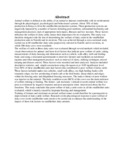| dc.description.abstract | Animal welfare is defined as the ability of an animal to interact comfortably with its environment
through its physiological, psychological and behavioural systems. About 70% of dairy production in
Kenya is from the smallholder production systems. These production systems are negatively impacted
by a number of factors including poor nutrition, substandard husbandry and management practices,
lack of appropriate farm inputs, diseases and low incomes. These factors influence the welfare of
dairy cattle, hence their importance for its evaluation. This study was therefore designed with the
aim of determining the welfare of dairy cattle in the smallholder production units in Nairobi and
its environs. This was achieved through a cross-sectional study carried out in 80 smallholder dairy
units purposively selected in Nairobi and its environs, in which 306 dairy cows were examined.
The welfare of cattle in these dairy units was evaluated through several methods which included:
visual observations for animal- and farm-level factors that indicate poor welfare of cattle; taking
measurements of dairy housing unit dimensions such as cubicle, walk-alley, kerb and feeding bunk;
and using a structured questionnaire to interview farmers and stockmen on nutritional regimes and
other management practices such as removal of slurry, milking techniques, record keeping and disease
control. These factors were recorded and later analyzed. Analyses included descriptive statistics, and
20
simple associations using chi-square at p< 0.05 significance level. Over 80% of these smallholder
units had factors that contributed to poor welfare of dairy cattle. These factors included under-size
cubicles, small walk-alleys, too high feeding bunks with traumatic edges, too low positioning of neck
rails at the feed bunks, sharp objects and edges within the housing units and dilapidated housing
structures. The main evidence of poor welfare was injuries on the animals. The body condition score
(BCS) of the cows was the main indicator of welfare relating to feeding. The famers’ and stockmen’s
attitude towards animal welfare was poor as evidenced by negative response and poor perception when
interviewed about the five freedoms. This study concludes that poor welfare of dairy cattle exists in
all the smallholder units evaluated, which is mainly caused by improper housing and management.
Training of farmers and stockmen on animal welfare issues would therefore be a prerequisite to
improvement of dairy cattle welfare. Research on the physiological response to poor welfare of dairy
cows in the smallholder units needs to be carried out to enhance the understanding of the impact of
these risk factors on smallholder dairy animals. | en_US |

